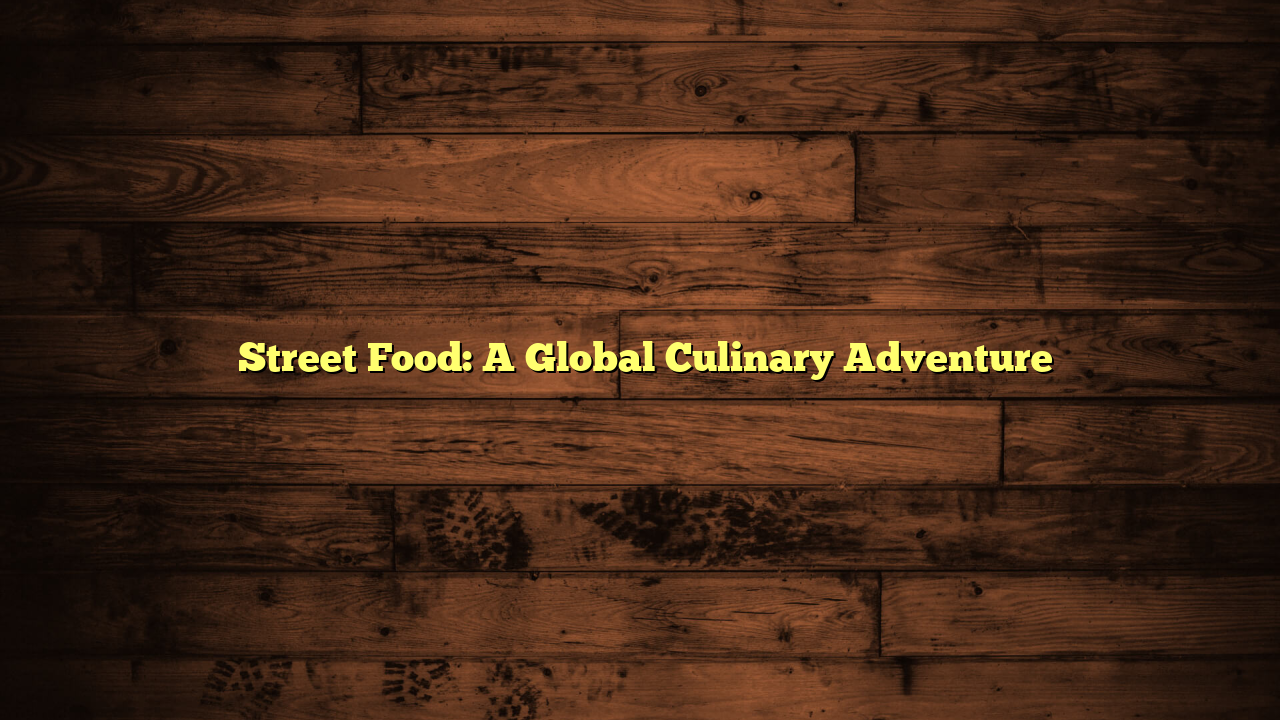Street food is one of the most exciting and authentic ways to experience a country’s culture. Found in bustling markets, roadside stalls, and food carts, street food offers a variety of flavors, textures, and aromas that reflect the traditions and history of a place. From the spicy skewers of Southeast Asia to the savory crepes of France, every country has its own unique street food culture.
In this article, we will explore the origins of street food, its significance in different cultures, and some of the most famous street foods from around the world.
1. The History and Evolution of Street Food
Street food has been around for thousands of years, dating back to ancient civilizations.
Ancient Origins:
● In Ancient Rome, vendors sold bread and porridge to the working class who lacked kitchens at home.
● In China, food stalls appeared during the Tang Dynasty (618–907 AD), serving noodles and dumplings to travelers.
● The Ottoman Empire popularized grilled meats and flatbreads, which later influenced kebabs and shawarma.
Over time, street food evolved to reflect local ingredients, cultural influences, and changing lifestyles. Today, street food is more than just a convenient meal—it is a symbol of heritage and identity.
2. The Importance of Street Food in Modern Society
Street food is an essential part of urban life for several reasons:
● Affordable and Accessible: Street food provides cheap, delicious meals for people of all economic backgrounds.
● Cultural Expression: Many traditional dishes survive through street food vendors, keeping culinary traditions alive.
● Social Experience: Eating street food is often a communal activity, bringing people together in open spaces.
● Tourism Appeal: Food lovers travel across the world to try authentic street dishes in their place of origin.
Despite concerns about hygiene in some areas, many governments are now regulating and improving street food safety, making it a thriving industry worldwide.
3. Famous Street Foods Around the World
Every region has its own street food specialties, showcasing unique flavors and cooking styles.
Asia: A Street Food Paradise
● Thailand: Pad Thai – Stir-fried rice noodles with shrimp, tofu, peanuts, and lime.
● India: Pani Puri – Crispy hollow balls filled with spiced water, potatoes, and chutneys.
● China: Jianbing – A savory pancake with egg, scallions, crispy crackers, and hoisin sauce.
● Japan: Takoyaki – Octopus-filled batter balls topped with mayonnaise and bonito flakes.
Europe: Classic and Modern Creations
● France: Crêpes – Thin pancakes filled with Nutella, fruit, or ham and cheese.
● Germany: Currywurst – Sausages sliced and covered in a tangy curry ketchup sauce.
● Italy: Arancini – Deep-fried rice balls stuffed with meat, cheese, and tomato sauce.
● Turkey: Simit – A sesame-covered bread similar to a bagel, often eaten for breakfast.
The Americas: Bold and Flavorful
● Mexico: Tacos al Pastor – Pork marinated with spices, cooked on a vertical spit, and served in tortillas.
bengkulutoto : Hot Dogs – A staple in New York City, often topped with mustard, ketchup, or sauerkraut.
● Brazil: Acarajé – Black-eyed pea fritters stuffed with spicy shrimp filling.
● Colombia: Arepas – Corn cakes filled with cheese, meat, or avocado.
Middle East & Africa: Spices and Tradition
● Lebanon: Shawarma – Thinly sliced marinated meat wrapped in pita with tahini sauce.
● Egypt: Koshari – A mix of rice, lentils, pasta, and fried onions, topped with tomato sauce.
● Nigeria: Suya – Spicy grilled meat skewers coated in peanut seasoning.
● South Africa: Bunny Chow – A hollowed-out loaf of bread filled with spicy curry.
Each of these dishes tells a story of local flavors, history, and culture, making street food an unforgettable part of any travel experience.
4. Street Food and Innovation: Fusion and Modern Trends
As street food continues to evolve, chefs are experimenting with fusion flavors and modern twists on traditional recipes. Some examples include:
● Korean-Mexican Tacos – Korean BBQ meats served in Mexican tortillas with kimchi.
● Ramen Burgers – Burger patties sandwiched between crispy ramen noodle “buns.”
● Bubble Waffles – A Hong Kong street food classic served with ice cream and toppings.
● Vegan Street Food – Plant-based versions of street classics like jackfruit tacos and tofu satay.
With social media platforms like Instagram and TikTok, street food trends spread quickly, influencing global food culture.
5. Challenges and the Future of Street Food
While street food is beloved worldwide, vendors face challenges such as:
● Hygiene Regulations – Many cities have strict health and safety rules that can be difficult for small vendors to meet.
● Urbanization – As cities grow, some street vendors struggle to find legal spaces to operate.
● Competition with Fast Food Chains – Big franchises often overshadow local street food businesses.
However, the future of street food looks promising with initiatives such as:
● Food truck movements – Providing a regulated way for street vendors to operate legally.
● Sustainability efforts – Using biodegradable packaging and reducing food waste.
● Online food delivery – Many street food vendors now sell their dishes through apps.
With continued innovation and cultural appreciation, street food will remain a vital part of global gastronomy.
Conclusion: Street Food as a Reflection of Culture
Street food is not just about eating—it is about experiencing a culture through its flavors, cooking techniques, and traditions. Whether you’re enjoying a plate of tacos on a busy street in Mexico City, sipping chai from a roadside vendor in India, or biting into a warm crepe in Paris, street food provides a direct connection to the heart of a community.
Despite the challenges, street food continues to thrive, bringing people together with its affordable, flavorful, and authentic culinary experiences. So, next time you travel, skip the fancy restaurants and head to a local food stall—you might just discover your new favorite dish!
Street Food: A Global Culinary Adventure



